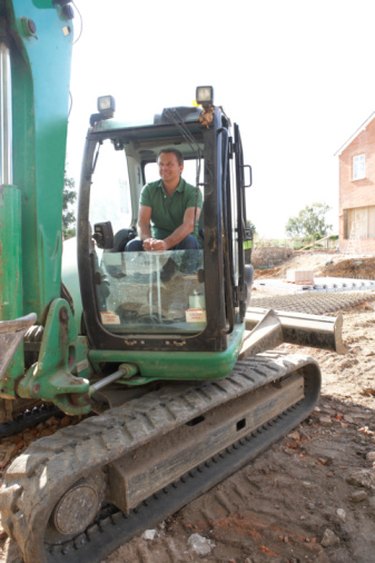
A backhoe loader differs from conventional earth moving equipment like bulldozers. While bulldozers lift earth with a forward motion, a backhoe draws the earth backwards and scoops it up. A backhoe loader typically has a front loader as well as an arm and a bucket at the back end of the machine.
The Boom
Video of the Day
The boom is the long part of the backhoe arm that is closest to the cab where the operator sits. The boom can be raised or lowered and navigated from left to right, which is known as "swinging" the boom. All these motions of the boom are controlled from the cab. Moving the left-hand control towards you raises the boom and moving it away from you lowers the boom.
Video of the Day
The Dipstick
The second part of the backhoe arm is called the dipstick. While the boom is attached to the operator's cab, the dipstick is connected from the pivot to the bucket that scoops the earth. It serves as the fore-arm of the backhoe. It also serves as a stabilizer bar that is strong enough to bear the weight of a full bucket.
The Bucket
The bucket is the final part of the backhoe and is the part that scoops the earth or debris that has to be moved. A pivot is provided between the dipper stick and the bucket to facilitate the movement of the bucket. To scoop up the earth, the bucket is moved towards the dipper stick. On the other hand, to empty the bucket the operator needs to move it away from the dipper stick. The bucket can be maneuvered using the right-hand controls of the cab.